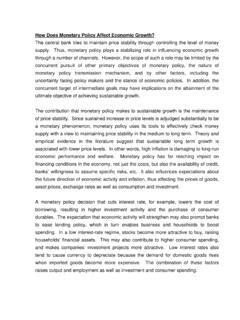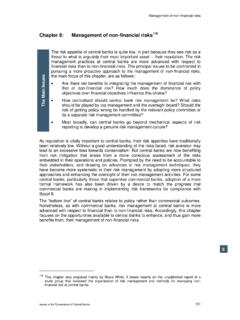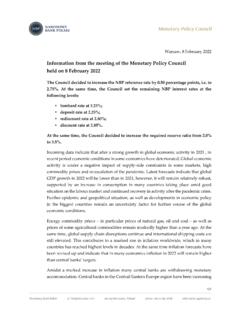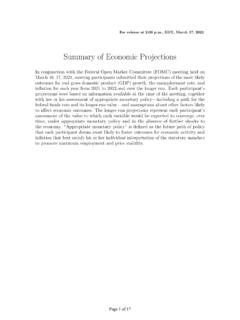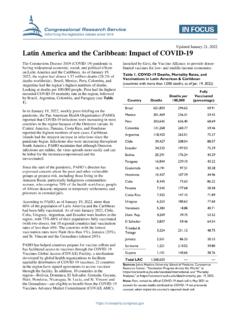Transcription of Population 2030 - FINAL - United Nations
1 E c o n o m i c & Population 2030 Demographic challenges and opportunities for sustainable development planning United Nations New York, 2015 S o c i a l A f f a i r s The Department of Economic and Social Affairs of the United Nations Secretariat is a vital interface between global policies in the economic, social and environmental spheres and national action. The Department works in three main interlinked areas: (i) it compiles, generates and analyses a wide range of economic, social and environmental data and information on which States Members of the United Nations draw to review common problems and take stock of policy options; (ii) it facilitates the negotiations of Member States in many intergovernmental bodies on joint courses of action to address ongoing or emerging global challenges; and (iii) it advises interested Governments on the ways and means of translating policy frameworks developed in United Nations conferences and summits into programmes at the country level and, through technical assistance, helps build national capacities.
2 The Population Division of the Department of Economic and Social Affairs provides the international community with timely and accessible Population data and analysis of Population trends and development outcomes for all countries and areas of the world. To this end, the Division undertakes regular studies of Population size and characteristics and of all three components of Population change (fertility, mortality and migration). Founded in 1946, the Population Division provides substantive support on Population and development issues to the United Nations General Assembly, the Economic and Social Council and the Commission on Population and Development. It also leads or participates in various interagency coordination mechanisms of the United Nations system.
3 The work of the Division also contributes to strengthening the capacity of Member States to monitor Population trends and to address current and emerging Population issues. Notes The designations employed in this report and the material presented in it do not imply the expression of any opinions whatsoever on the part of the Secretariat of the United Nations concerning the legal status of any country, territory, city or area or of its authorities, or concerning the delimitation of its frontiers or boundaries. This report is available in electronic format on the Division s website at For further information about this report, please contact the Office of the Director, Population Division, Department of Economic and Social Affairs, United Nations , New York, 10017, USA, by Fax: 1 212 963 2147 or by e-mail at Suggested citation: United Nations , Department of Economic and Social Affairs, Population Division (2015).
4 Population 2030: Demographic challenges and opportunities for sustainable development planning (ST/ ). Official symbols of United Nations documents are composed of capital letters combined with numbers, as illustrated in the above citation. Copyright United Nations , 2015 All rights reserved i PREFACE The Population Division of the Department of Economic and Social Affairs (DESA) of the United Nations Secretariat is responsible for providing the international community with up-to-date and scientifically objective information on Population and development. The Population Division provides guidance on Population and development issues to the United Nations General Assembly, the Economic and Social Council and the Commission on Population and Development and undertakes regular studies on Population estimates and projections, fertility, mortality, migration, reproductive health, Population policies and Population and development interrelationships.
5 This paper reports on research undertaken to draft the report of the Secretary-General on Integrating Population issues into sustainable development, including in the post-2015 development agenda ( *), presented at the 48th session of the Commission on Population and Development, 13-17 April 2015. This paper examines, at greater length than the Secretary-General s report, the United Nations latest Population projections for countries and regions for the period 2015-2030 the implementation period of the 2030 Agenda in order to identify the coming challenges to and opportunities for sustainable development associated with demographic trends over the near-term. Drawing on the 2015 Revision of World Population Prospects, it discusses the projected numbers of births, children of primary-school age, adolescents and youth, women of reproductive age, older persons and urban dwellers.
6 By considering these demographic trends within the context of each country s existing capacity to meet the needs of its Population , as assessed primarily through progress achieved towards the Millennium Development Goals (MDG) targets, this report identifies where efforts must be intensified to expand basic services to growing numbers of people, as well as where Population factors are likely to present opportunities to accelerate development progress. Moreover, this paper compares recent Population growth to trends in carbon emissions in energy use in order to understand the implications of demographic trends for environmental sustainability. The paper was co-authored by Sara Hertog, Population Affairs Officer, and Barney Cohen , Chief, Population Studies Branch, Population Division, DESA.
7 The paper is available at the Population Division s website at For further information concerning this publication, please contact the Population Division, Department of Economic and Social Affairs, United Nations , New York, 10017, USA, telephone +1-212-963-3209, fax +1-212-963-2147, email: Deceased 19 September 2015. 1 I. Introduction Discussions of Population and sustainable development once were dominated by a concern that world Population growth would eventually exceed the planet s carrying capacity, in particular with respect to the availability of natural resources. Especially since the mid-twentieth century a time of unprecedented global Population growth many worried about humans capacity to produce enough food to sustain the growing numbers of people, particularly in Africa and Asia, where Population growth was fastest and food security already tenuous (Ehrlich, 1968, World Bank 1984).
8 Between 1950 and 2015, however, the world s Population nearly tripled from billion people to billion people ( United Nations , 2015a), and the direst predictions of decades earlier have not come to pass, largely owing to new technologies that have enhanced the efficiency of global food production to a degree previously thought impossible (Lam 2011). Although the global rate of Population increase has slowed considerably, the world is still expected to add around 83 million people in 2015. Lessons of the past several decades have spurred an evolution in concerns about continued Population growth, which today tend to focus less specifically on the volume of food production and more broadly on the numerous pressures exerted by growing populations on the natural environment land, forests, biodiversity, ground water, oceans, air quality and climate through unsustainable production and consumption patterns (UNFPA Technical Division, 2012).
9 Generally speaking, the human impact on the environment is determined by three intersecting factors: 1) Population growth and 2) economic growth, which together shape production and consumption demands; and 3) technological advancements, which influence the efficiency and impact of the consumption of resources (Commoner et al. 1971; Ehrlich and Holdren, 1971). According to the United Nations median projection (2015a), the world s Population will grow to around billion in 2030, the target date for the 17 sustainable development goals (SDGs) outlined in the 2030 Agenda for Sustainable Development (General Assembly resolution 70/1). The degree to which that Population growth will stress natural resources and harm the environment will thus depend on: 1) the consumption and production patterns that accompany Population growth and economic growth over that period; and 2) success in developing and implementing the technological advancements needed to improve efficiency and reduce humanity s global environmental footprint.
10 Predicting economic growth and technological change is notoriously difficult, even over the short term. The country-level and regional-level forecasts of gross domestic product (GDP) produced by the World Bank and the International monetary Fund (IMF) extend no more than a few years into the future and are subject to a high degree of uncertainty (World Bank Group, 2014; IMF, 2015). In stark contrast, the near future of world Population is relatively certain. This is because the size and age structure of the Population over the next 15 years are largely the result of demographic processes (particularly fertility and mortality) that have already taken place in the past. Consequently, between now and 2030 we can predict with confidence which populations will grow and which will decline, as well as their age structures and, to a lesser extent, their spatial distributions.










